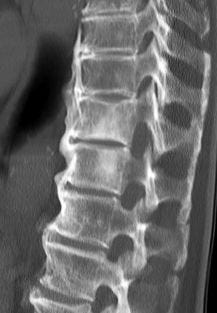Welcome Back Rheumatology Fans,
Diffuse Idiopathic Skeletal Hyperostosis is a DISH best served cold. Sorry, that makes no sense whatsoever but I couldn’t resist it…
DISH is pretty much what it says on the tin and there is plenty for us to get our teeth into in this article.
In This Article
Introduction To DISH (Free)
Distinguishing DISH from AxSpA
Introduction To DISH
Diffuse - Multiple areas (in this case at least 3 levels)
Idiopathic - The pathogenesis and causes are relatively poorly understood
Skeletal - It affects the skeleton (predominantly the spine)
Hyperostosis - Charecterised by an overgrowth of bone
DISH is quite a fascinating skeletal issue, the outcomes of which are usually spinal fusion and resultant severe spinal stiffness. It is often asymptomatic and therefore picked up incidentally while investigating other issues (chest xrays are common in my experience). Due to the nature of the disease and its severe spinal stiffness I am commonly asked about it on my courses. We will differentiate it from AxSpA later.
It most commonly affects males over 50 and is extremely uncommon before this age. It affects in total approximately 6%-12% of the population but some people never become aware of it affecting them. Over the age of 50 it affects nearly 25% of males and 15% of females, over the age of 80 it affects 28% of males and 26% of females. It is slightly more common in the caucasian population than other populations.
The ossification pattern is flowing osteophytes of at least 3 levels of the spine affecting the anterolateral aspect. less commonly it can occur as peripheral enthesopathy of the shoulder, elbow, knee or calcaneus.
The most commonly affected area is the thoracic spine followed by the cervical and lumbar spine. Stiffness and loss of range of motion is the predominant symptom but pain can occur especially if there is nerve impingement from the bony overgrowth. If the cervical spine is affected significant functional restrictions occur (sleeping comfort, driving) and dysphagia is also a possible complication.
The fused spinal segments represent a very real risk of fragility fracture because of their inability to absorb shock and poor new bone quality.
Diagnosis later in disease is much easier due to the ankylosis from flowing osteophytes but early diagnosis is more challenging. The early findings of new bone growth are commonly reported as incidental and likely affecting only one or two spinal segments.
Keep reading with a 7-day free trial
Subscribe to The Rheumatology Physio to keep reading this post and get 7 days of free access to the full post archives.




